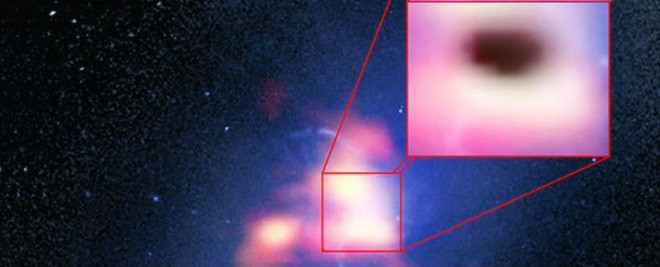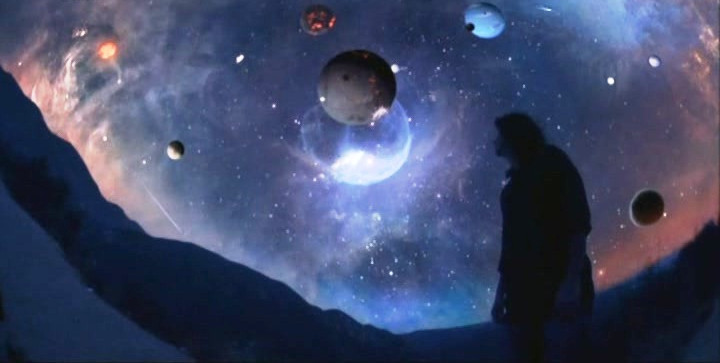Unexpected discovery: Rain occurs in cosmic black hole
It seems that rain is only available on Earth, but in the universe there are also unbelievable weather phenomena.
At the center of the galaxy Abell 2597 , an incredible phenomenon made astronomers amazed and excited when we could first witness a rain in the universe.

Cold gas cloud around the black hole.(Photo ScieneAlert).
The fact that a black hole becomes bigger and bigger can be explained through this observation, when huge gas clouds swallowed up by black holes.
Yale University astronaut Grant Tremblay said:
"Although, there has been a predictive theory of this phenomenon in recent years, but perhaps this is the first time we have observed evidence of chaos, cold rains around the black hole ". .
"It is interesting that we may have actually observed the storms that are being absorbed by black holes about 300 million times the size of the sun".

This phenomenon was first observed.
Tremblay and his team used the Atacama Large telescope data set in Chile Millimetre / submillimetre Array (ALMA) to observe the activity of gas-gas molecules in the Abell center 2597.
Abell 2597 is the brightest galaxy cluster of spiral galaxies with a collection of 50 large and small galaxies, 1.23 billion light-years away.
The researchers discovered that giant cold gas clouds move at 1 million km / h towards this black hole.
They estimate that each cloud consists of matter equivalent to millions of suns and extends at least 10 light-years to pass through them.
Scientists also named this strange phenomenon, black hole rain, because conditions are quite similar to Earth's with the temperature and density of gas clouds and see this as a phenomenon. Strange weather is extremely rare, at least until now.

Abell 2597 is 1.23 billion light-years away.
Earlier observations of the black hole "swallowing" hot gas gases have hypothesized the reason they became bigger and bigger. But observing cold gas clouds makes scientists need to reconsider that hypothesis.
The results are published in Nature.
- Discover the mystery of the most exotic black holes in the universe
- 740 million light years away is a completely different universe of black holes
- Surviving and even being
- Video: Compare the size of black holes in the universe
- How to detect cosmic black holes
- Humanity lives in the black hole of the universe?
- Super black holes bombard the Earth with powerful cosmic rays
- The first time a black hole was discovered, it swallowed a star
- Black hole universe is a time machine?
- Video: Top 5 biggest black holes discovered by NASA in 2017
- No one expected, there were these weird black holes
- Snatching up the image of a choking cosmic black hole when swallowing a star
 Van Allen's belt and evidence that the Apollo 11 mission to the Moon was myth
Van Allen's belt and evidence that the Apollo 11 mission to the Moon was myth The levels of civilization in the universe (Kardashev scale)
The levels of civilization in the universe (Kardashev scale) Today Mars, the sun and the Earth are aligned
Today Mars, the sun and the Earth are aligned The Amazon owner announced a secret plan to build a space base for thousands of people
The Amazon owner announced a secret plan to build a space base for thousands of people Satellite detects 'super pollution' that is warming the planet
Satellite detects 'super pollution' that is warming the planet  Decoding the mystery of the giant 'death hole' in Siberia
Decoding the mystery of the giant 'death hole' in Siberia  A death hole appeared in the middle of the galaxy's 'heart' containing Earth
A death hole appeared in the middle of the galaxy's 'heart' containing Earth  I got goosebumps because I discovered hundreds of 'black spiders' on Mars
I got goosebumps because I discovered hundreds of 'black spiders' on Mars  NASA found traces of methane gas near a crater on Mars
NASA found traces of methane gas near a crater on Mars  Top 4 'craziest' biological weapons in human history
Top 4 'craziest' biological weapons in human history 